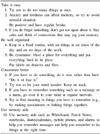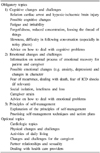Abstract
The number of survivors after hypoxic-ischemic encephalopathy has been increasing due to recent progress in medical system and care. Impairment after injury ranges from mild memory deficit to vegetative state or death. Cognitive impairment is particularly common in the survivors, because the hippocampus and medial temporal lobe are vulnerable to ischemic insult. Medication and cognitive rehabilitation should be initiated to minimize the impact of various cognitive deficits. Instead of Glasgow-Pittsburgh Cerebral Performance Categories, which is insensitive to functional change, standardized functional assessment tools should also be used in research as well as in rehabilitation settings.
Figures and Tables
References
1. Song KJ, Shin SD, Park CB, Kim JY, Kim do K, Kim CH, Ha SY, Eng Hock Ong M, Bobrow BJ, McNally B. Dispatcher-assisted bystander cardiopulmonary resuscitation in a metropolitan city: a before-after population-based study. Resuscitation. 2014; 85:34–41.
2. Greer DM. Mechanisms of injury in hypoxic-ischemic encephalopathy: implications to therapy. Semin Neurol. 2006; 26:373–379.
3. Khot S, Tirschwell DL. Long-term neurological complications after hypoxic-ischemic encephalopathy. Semin Neurol. 2006; 26:422–431.
4. Young GB. Clinical practice. Neurologic prognosis after cardiac arrest. N Engl J Med. 2009; 361:605–611.
5. Longstreth WT Jr, Inui TS, Cobb LA, Copass MK. Neurologic recovery after out-of-hospital cardiac arrest. Ann Intern Med. 1983; 98:588–592.
6. Zandbergen EG, de Haan RJ, Reitsma JB, Hijdra A. Survival and recovery of consciousness in anoxic-ischemic coma after cardiopulmonary resuscitation. Intensive Care Med. 2003; 29:1911–1915.
7. Fitzgerald A, Aditya H, Prior A, McNeill E, Pentland B. Anoxic brain injury: Clinical patterns and functional outcomes. A study of 93 cases. Brain Inj. 2010; 24:1311–1323.
8. Recommended guidelines for uniform reporting of data from out-of-hospital cardiac arrest: the 'Utstein style'. Prepared by a Task Force of Representatives from the European Resuscitation Council, American Heart Association, Heart and Stroke Foundation of Canada, Australian Resuscitation Council. Resuscitation. 1991; 22:1–26.
9. Nielsen N, Wetterslev J, Cronberg T, Erlinge D, Gasche Y, Hassager C, Horn J, Hovdenes J, Kjaergaard J, Kuiper M, Pellis T, Stammet P, Wanscher M, Wise MP, Aneman A, Al-Subaie N, Boesgaard S, Bro-Jeppesen J, Brunetti I, Bugge JF, Hingston CD, Juffermans NP, Koopmans M, Kober L, Langorgen J, Lilja G, Moller JE, Rundgren M, Rylander C, Smid O, Werer C, Winkel P, Friberg H. Investigators TTMT. Targeted temperature management at 33 degrees C versus 36 degrees C after cardiac arrest. N Engl J Med. 2013; 369:2197–2206.
10. Hopkins RO, Tate DF, Bigler ED. Anoxic versus traumatic brain injury: amount of tissue loss, not etiology, alters cognitive and emotional function. Neuropsychology. 2005; 19:233–242.
11. Hopkins RO, Bigler ED. Neuroimaging of anoxic injury: implications for neurorehabilitation. NeuroRehabilitation. 2012; 31:319–329.
12. Lu-Emerson C, Khot S. Neurological sequelae of hypoxic-ischemic brain injury. NeuroRehabilitation. 2010; 26:35–45.
13. Moulaert VR, Verbunt JA, van Heugten CM, Wade DT. Cognitive impairments in survivors of out-of-hospital cardiac arrest: a systematic review. Resuscitation. 2009; 80:297–305.
14. Harukuni I, Bhardwaj A. Mechanisms of brain injury after global cerebral ischemia. Neurol Clin. 2006; 24:1–21.
15. van Alem AP, de Vos R, Schmand B, Koster RW. Cognitive impairment in survivors of out-of-hospital cardiac arrest. Am Heart J. 2004; 148:416–421.
16. Moulaert VR, Wachelder EM, Verbunt JA, Wade DT, van Heugten CM. Determinants of quality of life in survivors of cardiac arrest. J Rehabil Med. 2010; 42:553–558.
17. Wachelder EM, Moulaert VR, van Heugten C, Verbunt JA, Bekkers SC, Wade DT. Life after survival: long-term daily functioning and quality of life after an out-of-hospital cardiac arrest. Resuscitation. 2009; 80:517–522.
18. Whyte J. Pharmacologic treatment of cognitive impairment after traumatic brain injury. In : Stuss DA, Winocur G, Robertson IH, editors. Cognitive Neurorehabilitation: Evidence and application. 2 ed. Cambridge: Cambridge University Press;2008. p. 321–331.
19. Ponsford J. Rehabilitation of attention following traumatic brain injury. In : Stuss DA, Winocur G, Robertson IH, editors. Cognitive Neurorehabilitation: Evidence and application. 2 ed. Cambridge: Cambridge University Press;2008. p. 507–516.
20. Wilson BA, Kapur N. Memory rehabilitation for people with brain injury. In : Stuss DA, Winocur G, Robertson IH, editors. Cognitive Neurorehabilitation: Evidence and application. 2 ed. Cambridge: Cambridge University Press;2008. p. 522–533.
21. Wilson BA. Memory Rehabilitation. New York: The Guilford Press;2009. p. 164.
22. Moulaert VR, Verbunt JA, Bakx WG, Gorgels AP, de Krom MC, Heuts PH, Wade DT, van Heugten CM. 'Stand still ... , and move on', a new early intervention service for cardiac arrest survivors and their caregivers: rationale and description of the intervention. Clin Rehabil. 2011; 25:867–879.




 PDF
PDF ePub
ePub Citation
Citation Print
Print






 XML Download
XML Download